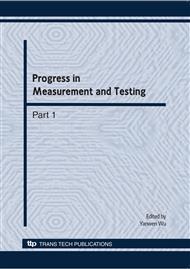p.151
p.156
p.162
p.168
p.172
p.178
p.184
p.190
p.195
Rate Distortion Model Analysis for H.264/AVC Video Coding
Abstract:
The Rate-Distortion model, which denotes relations among distortion, bit rate and quantization parameter for a video sequence, is a crucial issue in rate control. The quadratic R-D model has been widely used in H.264/AVC rate control because of its high performance. Since the adoption of Rate Distortion Optimization in H.264/AVC, the rate control algorithm is more complex than that of previous standards. In this paper, we firstly analyze the model error of the quadratic model, and then calculate the prediction error of MAD in H.264/AVC based on theoretical derivation and extensive experiments, finally propose a linear MAD model to predict the current MAD. Experimental results demonstrate that the proposed linear model gains higher prediction accuracy than the quadratic model.
Info:
Periodical:
Pages:
172-177
Citation:
Online since:
May 2010
Authors:
Keywords:
Price:
Сopyright:
© 2010 Trans Tech Publications Ltd. All Rights Reserved
Share:
Citation:


